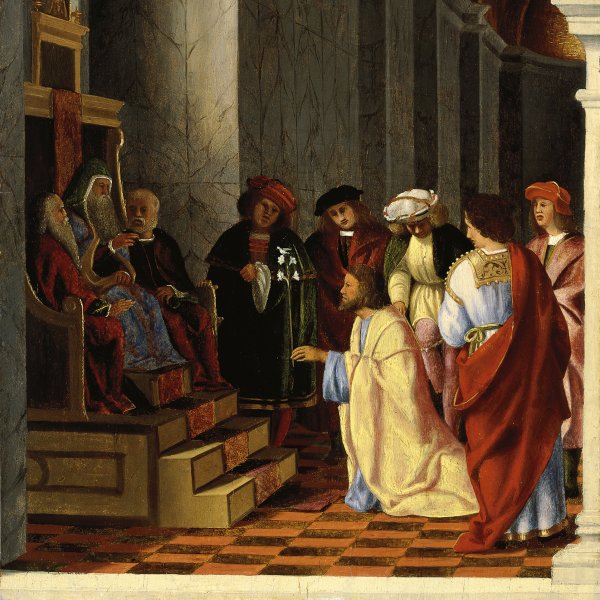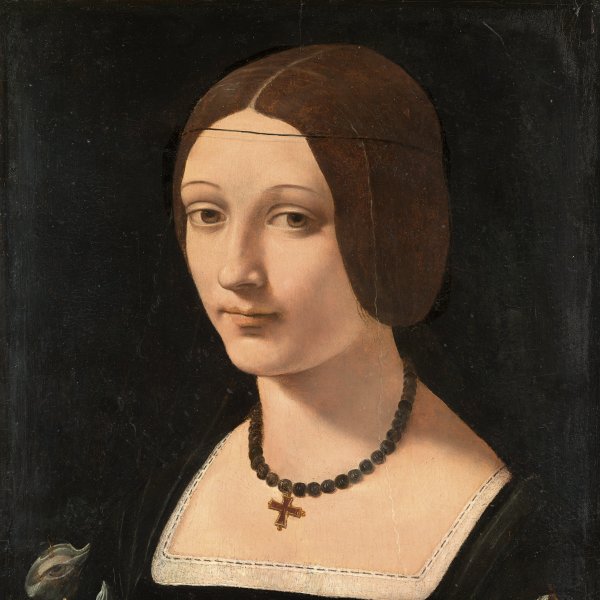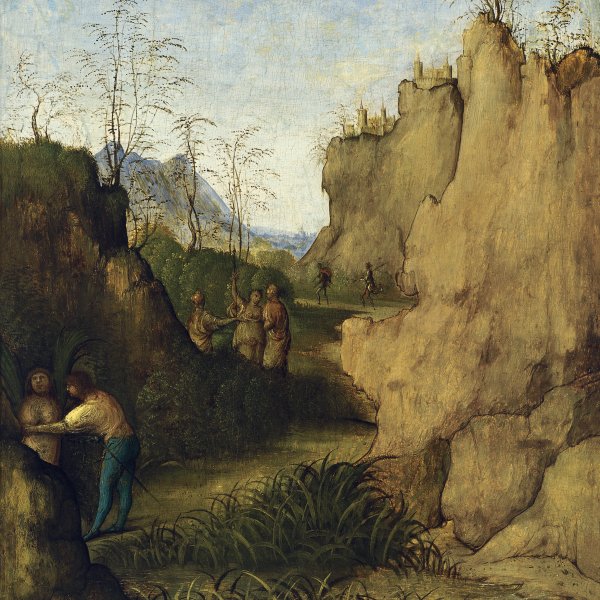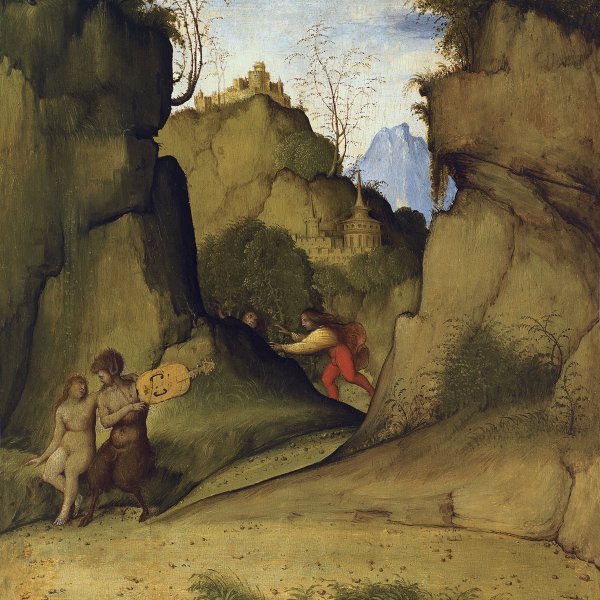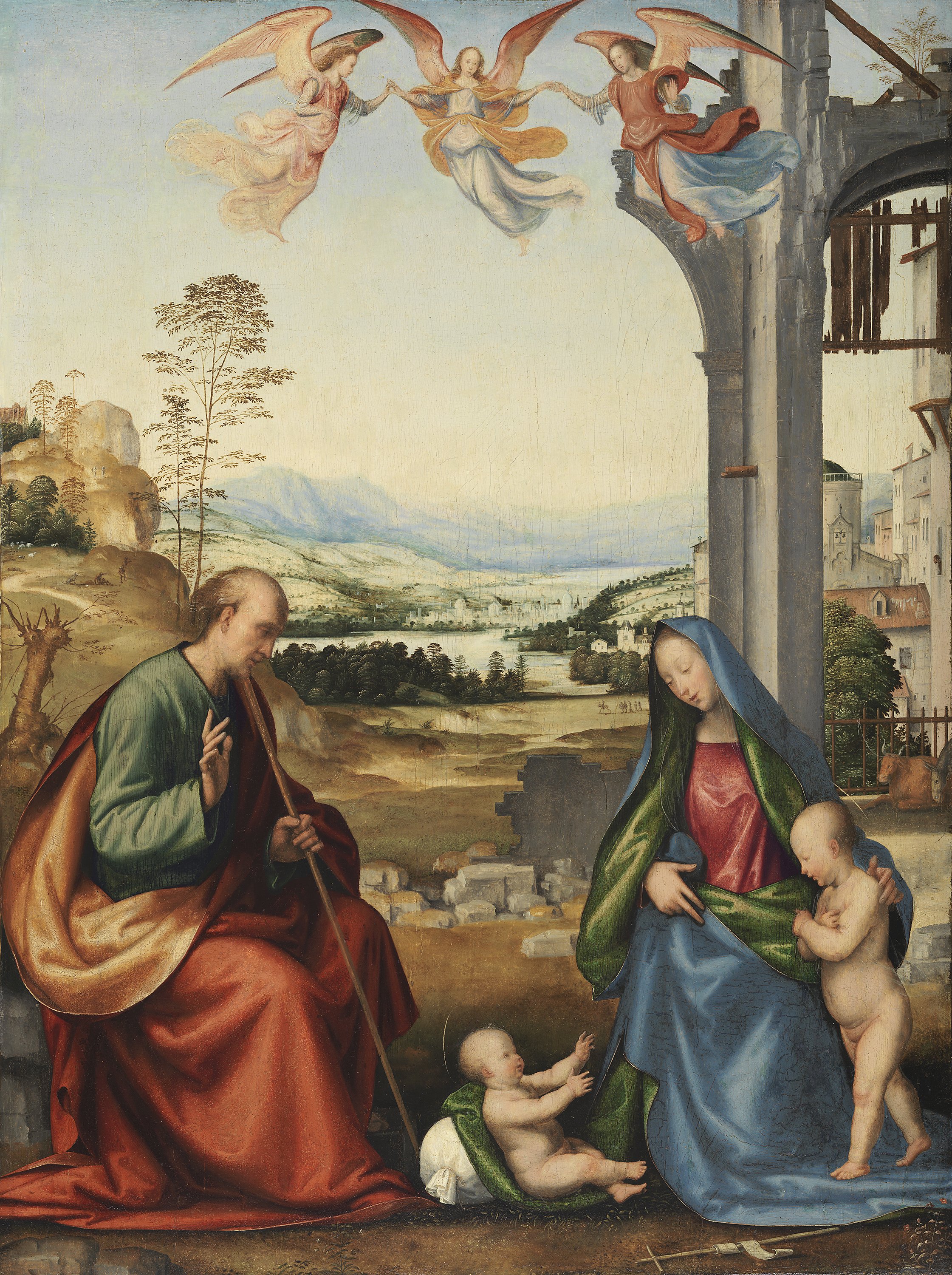The Holy Family with the Infant Saint John the Baptist
ca. 1506 - 1507
Oil on panel.
62 x 47 cm
Museo Nacional Thyssen-Bornemisza, Madrid
Inv. no.
29
(1955.6
)
Room 7
Level 2
Permanent Collection
Baccio della Porta, Fra Bartolommeo’s name before he entered the Dominican Order, was trained in Florence with Cosimo Rosselli, although his real master was Piero di Cosimo, with whom he coincided in Rosselli’s workshop. It was Piero di Cosimo who encouraged the artist to study the technique and compositions of the Flemish painters as well as the work of other Florentine artists. In 1500 della Porta entered the monastery of Santo Domenico in Prato and later moved to the monastery of San Marco in Florence, at which point he took on the name of Fra Bartolommeo. In 1508 he visited Venice where the use of colour in Venetian art influenced his own style.
Between 1513 and 1514 he was in Rome where he worked for the Prior of San Silvestre al Quirinale. The artist’s earliest works reveal his knowledge of Quattrocento painting and of the work of Leonardo, from whom he derived elements such the approach to tonal gradation. Fra Bartolommeo was a follower of Savonarola and his works reflect the teachings of that monk, who was put to death in 1498. Vasari considered him an excellent painter, praising his colouring, especially the flesh tones and draperies in which he achieved soft tonalities. Vasari also emphasised his manner of softening the motifs and his technique of creating chiaroscuro and shadows that made his figures “acquire such relief that they seemed alive”.
The present panel depicts a subject widely depicted in Italy in the 15th and 16th centuries: that of the meeting between the Infant Christ and the Infant Saint John the Baptist. The artist, however, adopted an innovative approach to this episode, which is not recounted in the Gospels. The setting and the figures surrounding the two principal ones are usually found in depictions of The Adoration of the Magi. Thus, on the right we see part of a ruined structure that refers to the stable in which the ox and ass lie, remote from the principal events. The foreground is occupied by the Holy Family, whose gestures are delicately conveyed with particular care by the artist so that the viewer grasps the sacred message of the composition. Despite the small size of the work the figures are particularly striking. Saint Joseph, on the left, has the Christ child lying at his feet on the Virgin’s robe. The Child stretches out his arms towards the nude Saint John, also standing on Mary’s robe and approaching the Christ Child in an attitude of devotion. Mary presents her son to Saint John, placing her hand gently on John’s back to encourage him to move forward. The composition is completed with another element characteristic of Adoration scenes: the three angels, who in this case float above the figures as if to protect the members of the Holy Family.
The influence of Flemish art is evident in the broad landscape in the background. Fra Bartolommeo constructed it using strong, contrasting tones that gradually diminish in intensity until the sky and mountain peaks blend together. The composition is imbued with a great sense of tranquillity, dignity and harmony, qualities characteristic of Fra Bartolommeo’s oeuvre as a whole, in which a sense of profound religiosity prevails.
Mar Borobia
Between 1513 and 1514 he was in Rome where he worked for the Prior of San Silvestre al Quirinale. The artist’s earliest works reveal his knowledge of Quattrocento painting and of the work of Leonardo, from whom he derived elements such the approach to tonal gradation. Fra Bartolommeo was a follower of Savonarola and his works reflect the teachings of that monk, who was put to death in 1498. Vasari considered him an excellent painter, praising his colouring, especially the flesh tones and draperies in which he achieved soft tonalities. Vasari also emphasised his manner of softening the motifs and his technique of creating chiaroscuro and shadows that made his figures “acquire such relief that they seemed alive”.
The present panel depicts a subject widely depicted in Italy in the 15th and 16th centuries: that of the meeting between the Infant Christ and the Infant Saint John the Baptist. The artist, however, adopted an innovative approach to this episode, which is not recounted in the Gospels. The setting and the figures surrounding the two principal ones are usually found in depictions of The Adoration of the Magi. Thus, on the right we see part of a ruined structure that refers to the stable in which the ox and ass lie, remote from the principal events. The foreground is occupied by the Holy Family, whose gestures are delicately conveyed with particular care by the artist so that the viewer grasps the sacred message of the composition. Despite the small size of the work the figures are particularly striking. Saint Joseph, on the left, has the Christ child lying at his feet on the Virgin’s robe. The Child stretches out his arms towards the nude Saint John, also standing on Mary’s robe and approaching the Christ Child in an attitude of devotion. Mary presents her son to Saint John, placing her hand gently on John’s back to encourage him to move forward. The composition is completed with another element characteristic of Adoration scenes: the three angels, who in this case float above the figures as if to protect the members of the Holy Family.
The influence of Flemish art is evident in the broad landscape in the background. Fra Bartolommeo constructed it using strong, contrasting tones that gradually diminish in intensity until the sky and mountain peaks blend together. The composition is imbued with a great sense of tranquillity, dignity and harmony, qualities characteristic of Fra Bartolommeo’s oeuvre as a whole, in which a sense of profound religiosity prevails.
Mar Borobia





